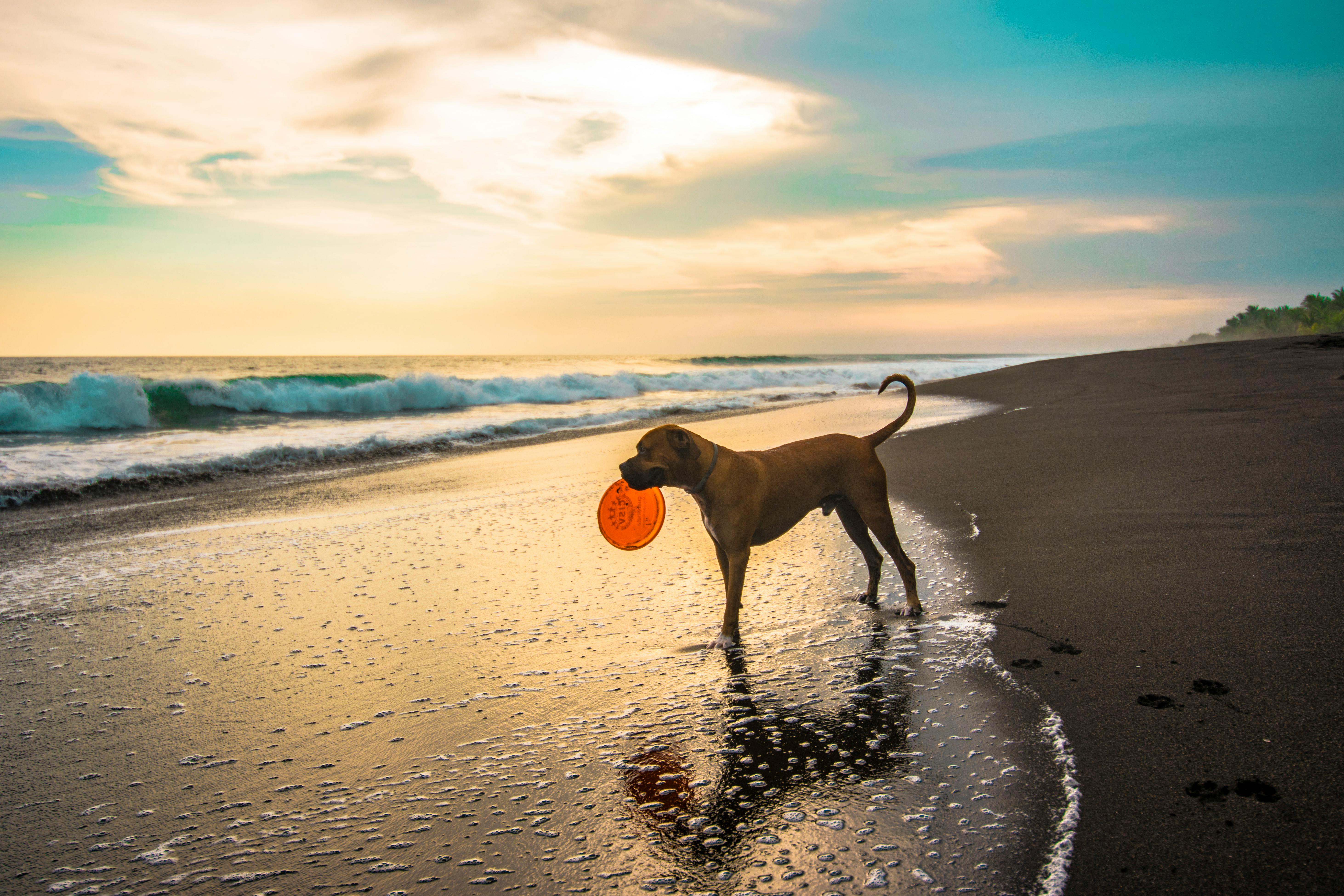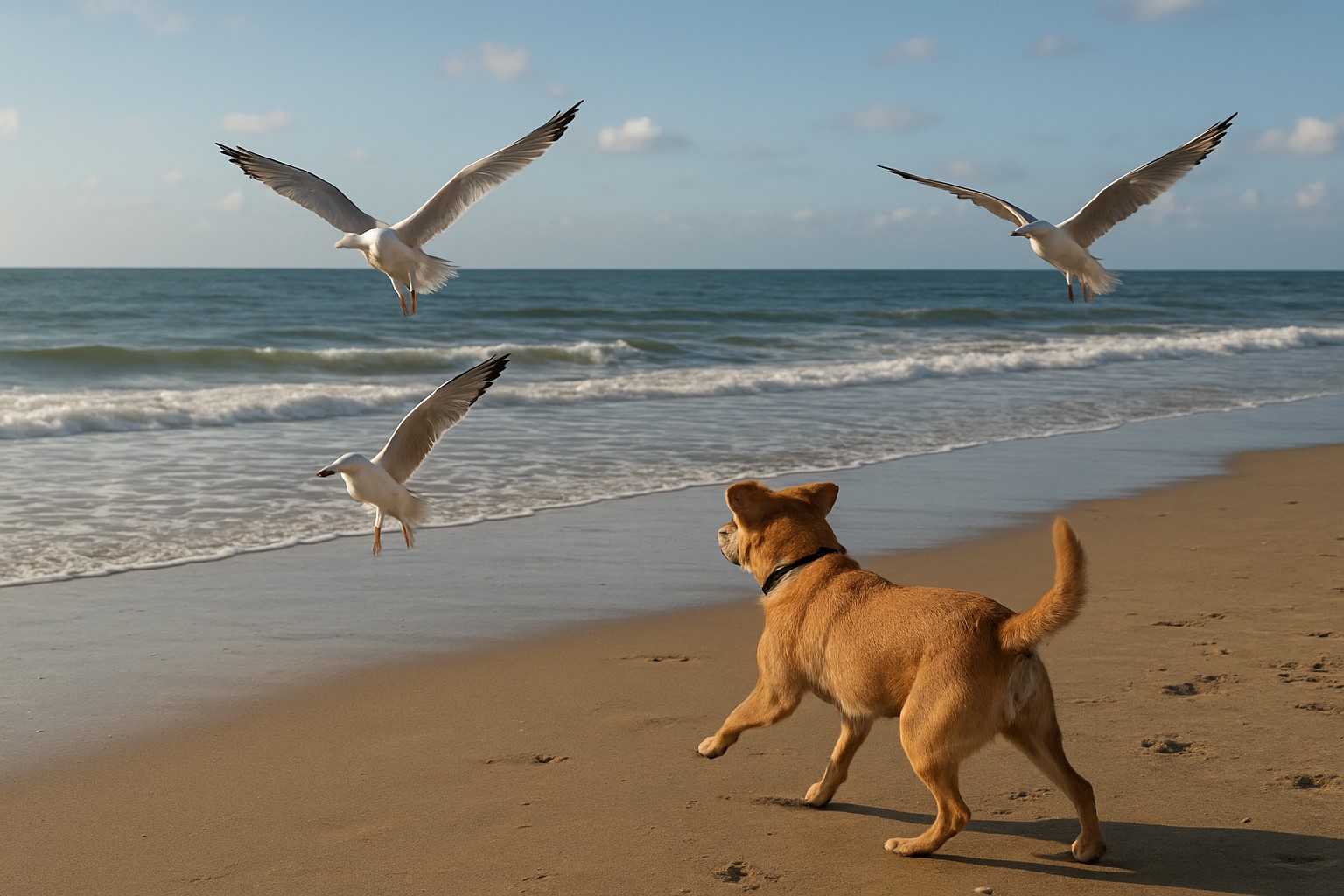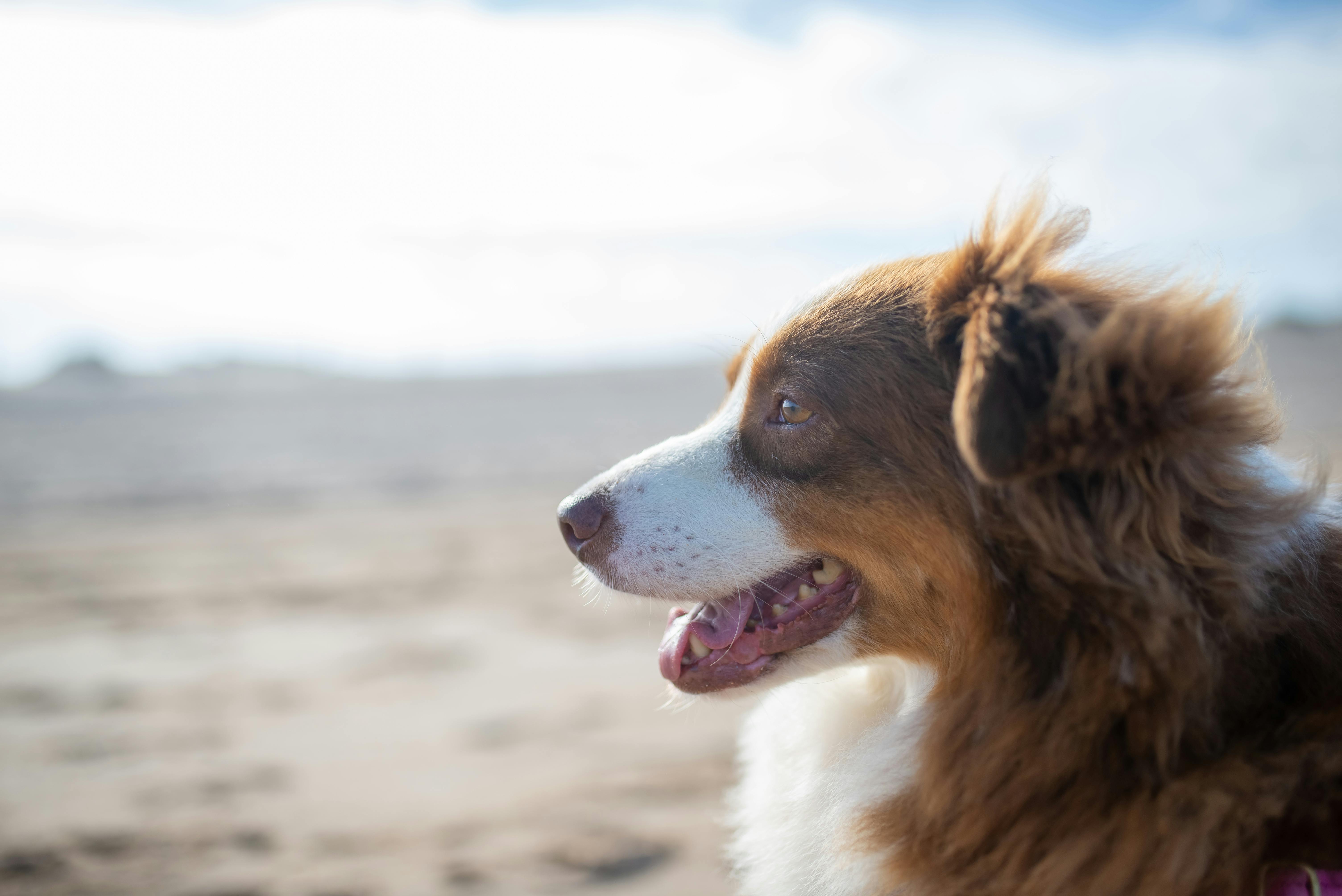Heatstroke in Dogs: Warning Signs and Prevention at the Beach
Florida beach days are wonderful — until the heat becomes a danger. Dogs overheat faster than people, and what starts as mild overheating can become life-threatening quickly. This guide explains early warning signs, immediate first aid steps, prevention strategies, and when to seek emergency veterinary care.
Why dogs are vulnerable to heat
Dogs cool themselves primarily through panting and through their paw pads; they don’t sweat the way humans do. Factors that increase heat risk include breed (short-nosed breeds like pugs and bulldogs are especially vulnerable), age (puppies and seniors), body condition (overweight dogs), coat type, and underlying health problems. Saltwater, direct sun, and hot sand add to the danger on beach days.
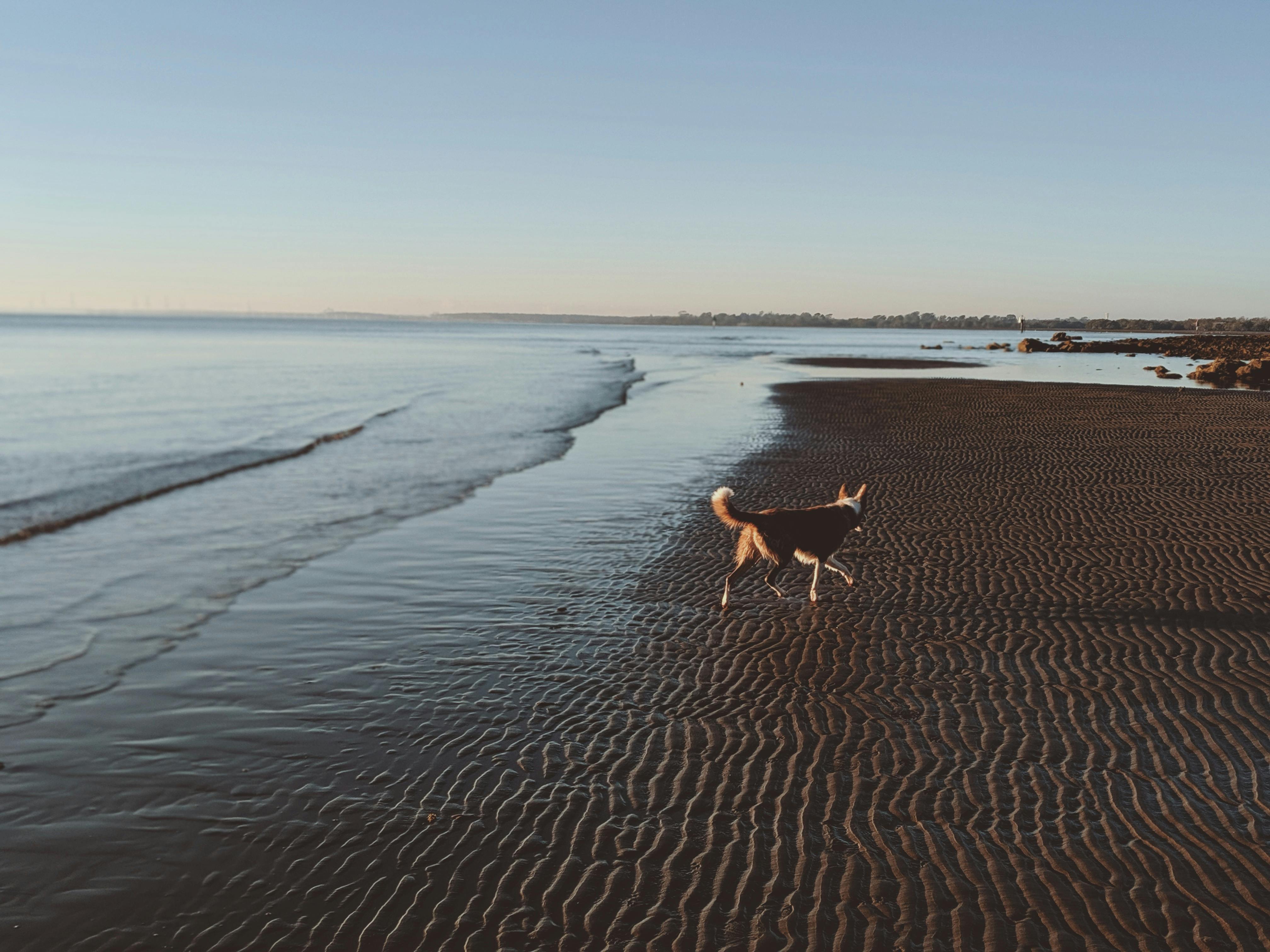
Early warning signs of overheating (heat exhaustion)
Catch overheating early — it’s the difference between a minor scare and a medical emergency. Watch for:
- Excessive panting or difficulty breathing — louder, faster, or more labored than normal.
- Drooling or thick saliva that is excessive.
- Bright red or very pale gums (check inside the mouth) — both are concerning.
- Weakness, wobbliness, or stumbling instead of the normal energetic gait.
- Excessive thirst, vomiting, or diarrhea that begins after playtime.
- Refusal to move or seek shade — lethargy can signal trouble.
Quick tip: If the dog’s tongue is very dark red, purple, or the gums stay pale after pressing, treat as a serious emergency and get veterinary help immediately.
Immediate on-the-spot actions if your dog shows signs
Stay calm and act fast. These steps help lower body temperature while you head to veterinary care if needed.
- Move to shade immediately. Get your dog out of direct sun and off hot sand or pavement.
- Offer cool (not icy) water in small amounts — encourage sips rather than gulping. Too much water too fast can cause vomiting.
- Begin cooling with tepid water. Use a hose, wet towels, or buckets of water. Avoid very cold or ice water — shocking cold can constrict blood vessels and worsen the situation.
- Apply cool, wet towels to neck, chest, and paw pads. Replace towels as they warm.
- Use a fan if available to increase evaporative cooling.
- Monitor breathing and gum color and prepare to transport to a vet if symptoms don’t improve within 10–15 minutes.
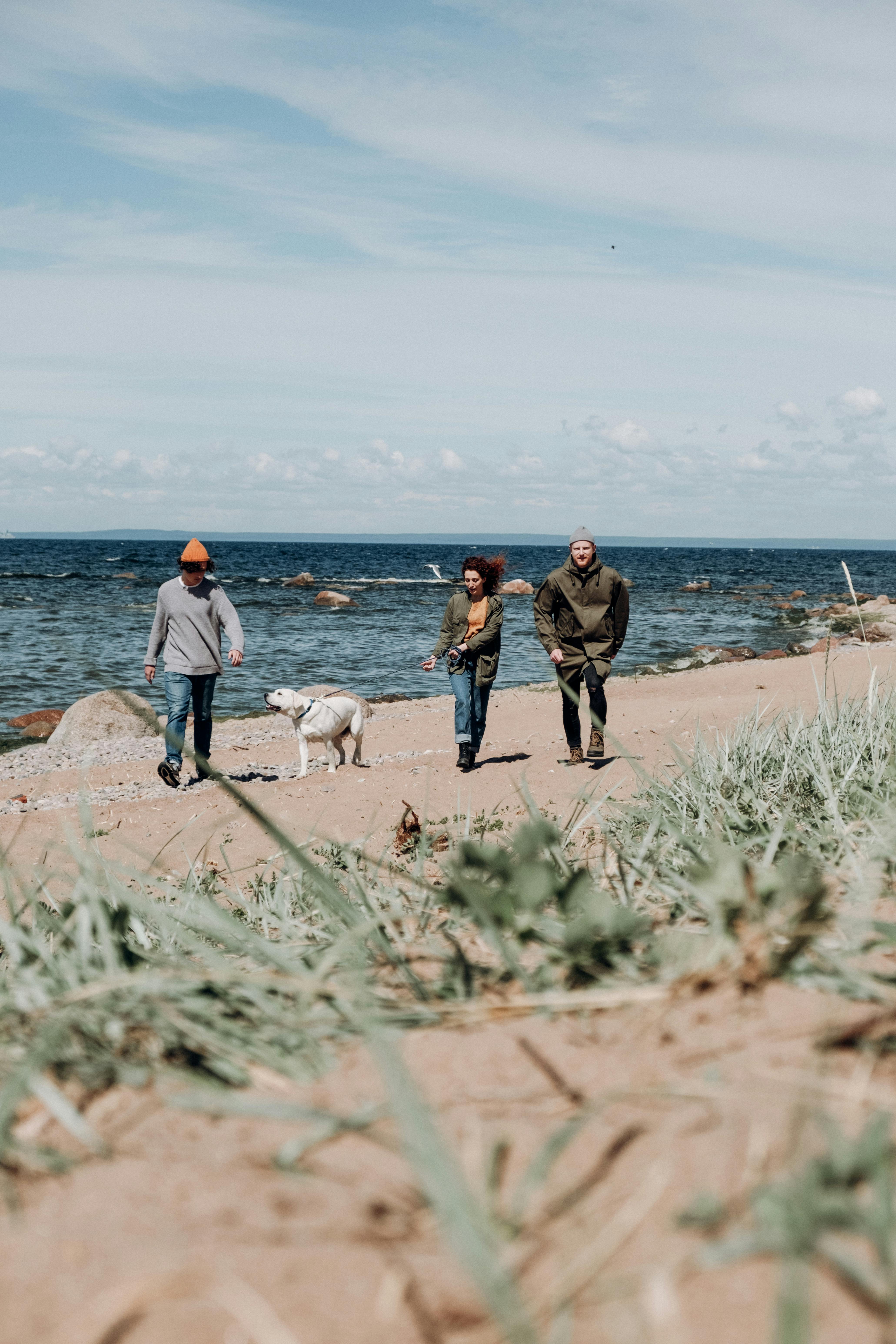
What NOT to do
- ❌ Do not immerse your dog in ice water — rapid cooling can cause shock or dangerously low blood pressure.
- ❌ Do not leave a dog in a parked car — it becomes deadly within minutes, even with windows cracked.
- ❌ Do not force large quantities of water into a dog’s mouth if they are disoriented or vomiting.
How vets treat heatstroke
If overheating progresses to heatstroke, professional care may include IV fluids for rehydration, electrolyte support, active cooling with controlled methods, oxygen therapy, and monitoring for complications such as organ damage, blood-clotting problems, or secondary infections. Even if your dog seems to recover after initial cooling, a vet check is strongly advised — internal damage can appear later.

Prevention: planning before you leave home
The best strategy is prevention. Follow these steps to reduce heat risk on any beach visit:
- Visit early or late: Avoid midday heat — go at sunrise or near sunset when temperatures are cooler.
- Bring shade: Take a beach umbrella, pop-up tent, or canopy so your dog can escape the sun.
- Pack plenty of fresh water and a collapsible bowl: Offer water frequently.
- Know your dog’s limits: Short-nosed (brachycephalic) breeds, seniors, puppies, and overweight dogs need extra caution — consider skipping beach play in extreme heat.
- Plan short, frequent sessions: Alternate active play with rest in the shade and cooling breaks.
- Use cooling gear: Cooling mats, vests, or bandanas can help lower body temperature when used correctly.
When to call the vet or seek emergency care
Call your veterinarian or emergency clinic immediately if your dog:
- Has trouble breathing, collapses, or becomes disoriented
- Shows persistent vomiting or bloody diarrhea
- Has seizures or loss of consciousness
- Temperature stays elevated (>104°F / 40°C) despite cooling efforts
Be prepared: Save local emergency vet numbers in your phone before trips and know the quickest route from popular beaches to the nearest clinic.
Longer-term monitoring after a heat event
Even after a dog appears to recover, complications can develop in the next 24–72 hours (e.g., organ dysfunction, blood clotting issues). Follow your vet’s instructions and watch for:
- Unusual lethargy, poor appetite, or persistent vomiting
- Disorientation, wobbliness, or seizures
- Dark or decreased urine output
Quick portable heatstroke checklist
- Move to shade immediately
- Offer small sips of cool (not cold) water
- Wet dog with tepid water; apply cool towels to neck and chest
- Use fan if available
- If no improvement in 10–15 minutes, head to vet
- Save emergency vet contact and photo of dog in your phone

FAQs
Q1: How hot is too hot to take my dog to the beach?
A: If the air temperature is above 85°F (29°C) — especially with high humidity — take extra precautions. Also test sand: if it’s too hot for your bare hand for 10 seconds, it’s too hot for paws.
Q2: Can dogs get heatstroke from sun on cloudy days?
A: Yes. Heatstroke is about body temperature, humidity, and reduced cooling efficiency — dogs can overheat even on overcast days if conditions are warm and humid.
Q3: Is my brachycephalic dog safe at the beach?
A: Short-nosed breeds (pugs, bulldogs, boxers) are at higher risk due to restricted airways. Keep outings very short, stay shaded, and consult your vet before extended outdoor activity.
Q4: How can I tell the difference between heat exhaustion and heatstroke?
A: Heat exhaustion includes excessive panting, drooling, and mild lethargy. Heatstroke is more severe: collapse, disorientation, vomiting, seizures, or very high body temperature. Treat heatstroke as a medical emergency.
Q5: Can water or swimming help prevent heatstroke?
A: Yes, short swims can help dogs cool down, but watch for overexertion. Always provide shade, fresh water, and rest breaks to prevent overheating even after swimming.
Q6: What should I do if my dog refuses to drink water while overheating?
A: Offer small sips frequently rather than forcing a lot at once. You can also use wet towels to cool the body externally. Seek veterinary attention promptly if your dog isn’t responding.
Q7: How long can heatstroke effects last after the initial event?
A: Internal complications may appear in 24–72 hours, including organ stress or blood-clotting issues. Monitor your dog carefully and follow up with your vet even if they seem okay initially.
Q8: Can older dogs handle heat as well as younger dogs?
A: Senior dogs are more vulnerable to heat stress due to reduced cardiovascular efficiency and other age-related conditions. Limit sun exposure and always provide shade, water, and cooling breaks.
Q9: Are there any signs of heatstroke in dogs that aren’t obvious?
A: Yes. Subtle signs include restlessness, mild panting, drooling, or reluctance to play. Don’t ignore these early warning signs — early action prevents full heatstroke.
Q10: Can dogs recover fully from heatstroke?
A: Many dogs recover if treated promptly, but some may experience lingering effects like organ stress. Rapid cooling, hydration, and veterinary follow-up are key to full recovery.
Q11: How quickly can heatstroke become life-threatening?
A: Heatstroke can escalate in just 10–20 minutes, especially on hot sand or in direct sun. Immediate cooling and veterinary care are crucial.
Q12: Can short walks in the sun cause heatstroke?
A: Yes, even brief exposure can be risky on hot days, particularly for sensitive breeds, seniors, or dogs with thick coats. Plan walks in shaded or cooler areas.
Q13: Is panting always a warning sign of heatstroke?
A: Panting is normal in dogs, but excessive, heavy, or labored panting — especially accompanied by drooling, red gums, or lethargy — is a warning sign.
Q14: Are dark-coated dogs more at risk?
A: Yes. Dark fur absorbs more heat from sunlight, increasing risk. Extra caution, shade, and water breaks are important for darker-coated dogs.
Q15: Can heatstroke happen indoors?
A: Yes. Poorly ventilated homes or cars on hot days can cause heatstroke. Never leave dogs unattended in cars, even with windows cracked.
Q16: Are cooling vests or mats effective?
A: Yes. Cooling vests, bandanas, or mats can help lower body temperature, but they should be used alongside shade, hydration, and monitoring for signs of overheating.
Q17: Can older or overweight dogs tolerate the beach?
A: Older or overweight dogs have reduced heat tolerance. Limit activity, use shade and water breaks, and consider shorter visits or avoiding peak heat hours.
Q18: Should I give my dog ice or ice water?
A: No. Sudden cold can constrict blood vessels and worsen heatstroke. Tepid water for external cooling and small sips of cool water for drinking are safest.
Q19: Can a dog have heatstroke without obvious panting?
A: Yes. Some dogs may collapse or show disorientation without heavy panting, particularly brachycephalic breeds or senior dogs. Watch all warning signs carefully.
Q20: How can I prepare for a beach visit to prevent heatstroke?
A: Plan early or late visits, bring shade, carry fresh water and a collapsible bowl, use cooling gear, limit high-energy play, and know local emergency vet contacts. Preparation is the best prevention.
Heatstroke is preventable with preparation and vigilance. Pack water, shade, a simple first-aid kit, and keep a close eye on your dog’s behavior. When in doubt, cool first and call the vet — rapid action saves lives.
